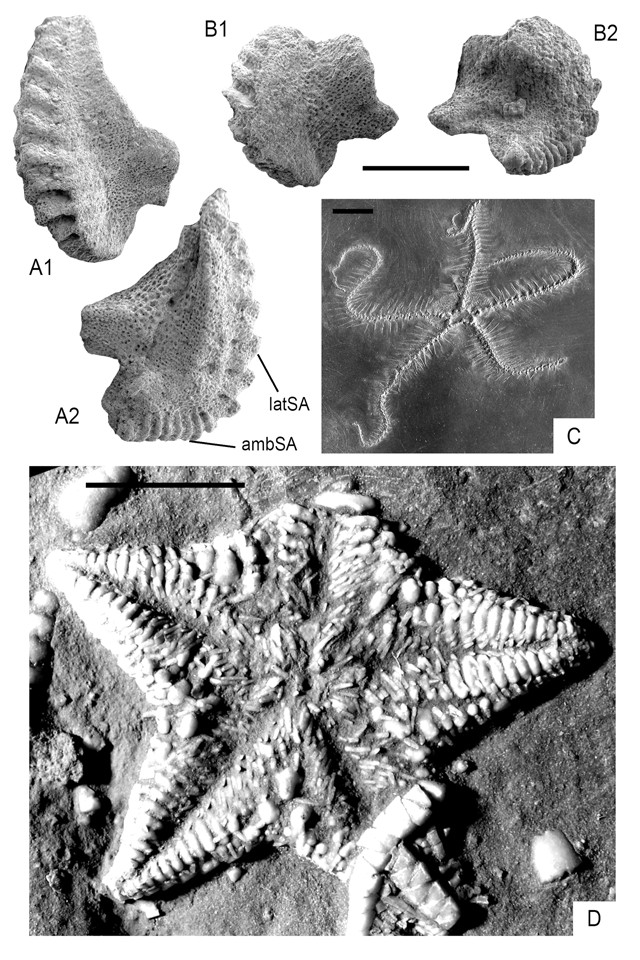
by Mary Caperton Morton Monday, June 19, 2017

Triassic asterozoans like these, along with other "hangover" echinoderm species, descended from Paleozoic lineages once thought to have gone extinct at the end of the Permian. Credit: Thuy et al., ©Geological Society of America, 2017.
The end-Permian extinction event was disastrous for a wide range of organisms on land and in the sea, with as many as 70 percent of terrestrial and 81 percent of marine species dying off. One of the hardest hit marine phyla was the echinoderms, which today includes sea urchins and starfish. Echinoderms are thought to have suffered one of the most severe population reductions in evolutionary history, with only a few members surviving to repopulate the oceans in the Triassic. But in a new study, researchers have identified Triassic fossils from a handful of “hangover” species whose ancestors were previously thought to have gone extinct at the end of the Permian, suggesting the extinction wasn’t quite as cataclysmic for echinoderms as paleontologists have suspected.
“The prevailing paradigm claims an extreme bottleneck with only very few … holdovers [i.e.,“hangovers”] sparking the post-Paleozoic radiation,” wrote lead author Ben Thuy of the Natural History Museum of Luxembourg and colleagues in Geology, which suggests that the Triassic radiation was sparked by just a few surviving lineages. Thuy’s team’s reexamination of fossils previously found in Triassic rocks across Europe and in China casts doubt on that paradigm, however. Based on a closer look at distinctive physical features of the fossils, the team identified examples of echinoids, ophiuroids and asteroids — three classes of echinoderms — that descend from Paleozoic lineages thought to have gone extinct during the end-Permian extinction. “Our discovery challenges fundamentals of echinoderm evolution with respect to end-Permian survival and sheds new light on the early evolution of the modern clades,” the team wrote.
© 2008-2021. All rights reserved. Any copying, redistribution or retransmission of any of the contents of this service without the expressed written permission of the American Geosciences Institute is expressly prohibited. Click here for all copyright requests.